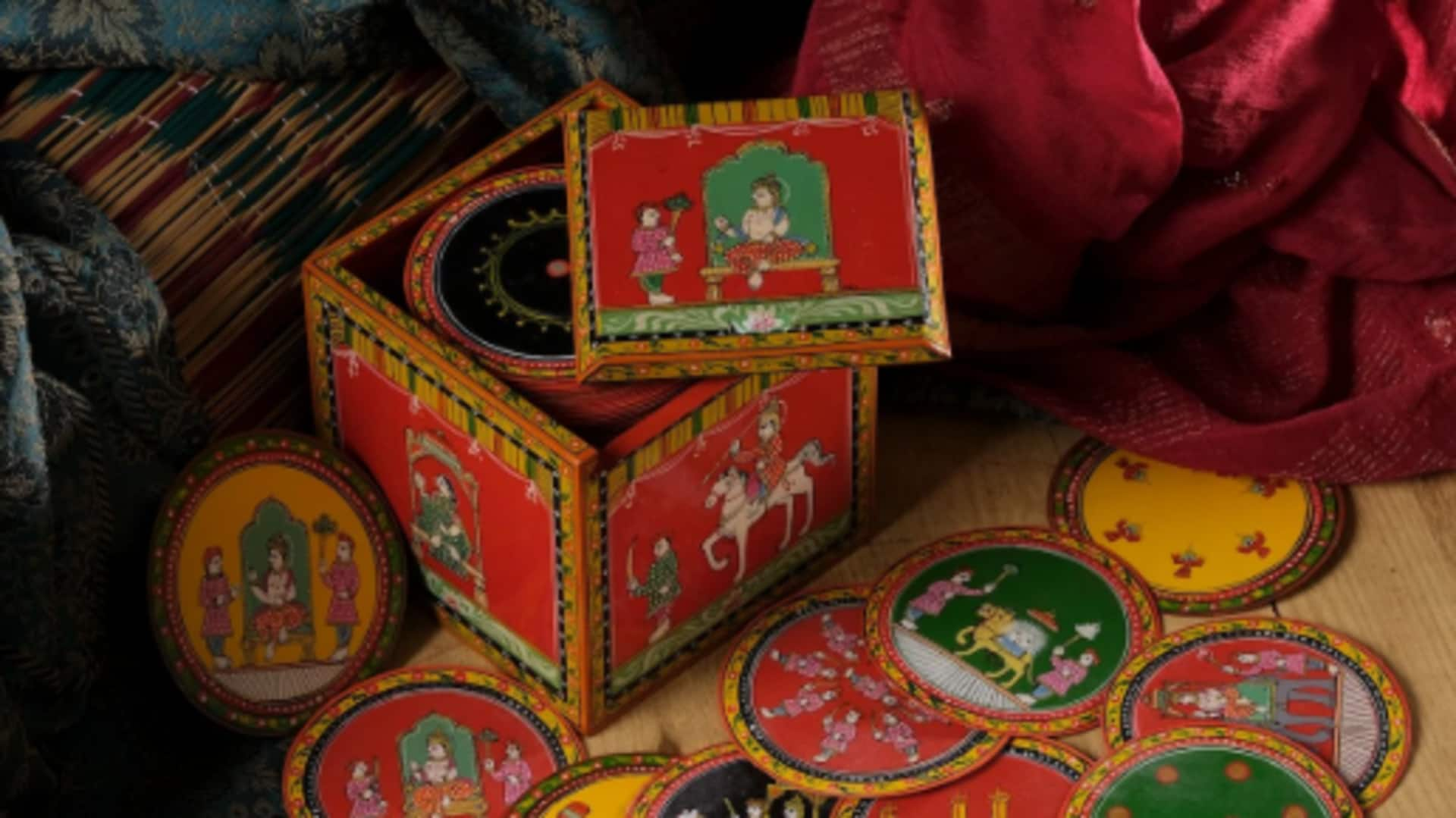
Ganjifa cards: A traditional Indian art form
What's the story
Ganjifa cards are an ancient Indian art form, which are circular playing cards traditionally painted with intricate designs. Hailing from the Mughal era, these cards were not just used for games but also as a medium of storytelling and cultural expression. Each card is a masterpiece, showcasing the rich heritage and craftsmanship of Indian artisans. The art of Ganjifa has been preserved over centuries, giving us a glimpse into India's artistic legacy.
#1
Historical origins of Ganjifa cards
Ganjifa cards trace their roots to Persia, where they were known as Ganjifa. They were brought to India by the Mughals, who fell in love with their beauty and complexity. The word Ganjifa means "playing cards" in Persian. In India, the cards were adapted to include local themes and motifs, resulting in a unique fusion of cultures.
#2
Craftsmanship involved in making Ganjifa cards
Creating Ganjifa cards is a labor-intensive process that requires immense skill and patience. The cards are made from layers of paper or cloth glued together to form a sturdy base. Artisans then paint intricate designs using natural pigments derived from plants and minerals. Each card is meticulously crafted to ensure that it meets high standards of artistry.
#3
Themes depicted on Ganjifa cards
The themes depicted on Ganjifa cards vary widely, from mythology to daily life scenes. Some decks feature Hindu deities or historical figures, while others showcase floral patterns or geometric designs. Each theme offers a glimpse into the cultural context of its time, making these decks valuable historical artifacts.
#4
Preservation efforts for Ganjifa art form
Despite its rich history, Ganjifa art has faced challenges over the years due to declining interest and lack of support for artisans. However, preservation efforts have gained momentum recently with initiatives aimed at reviving this traditional craft through workshops and exhibitions. These efforts aim not only to keep the art form alive but also to educate people about its significance in India's cultural heritage.